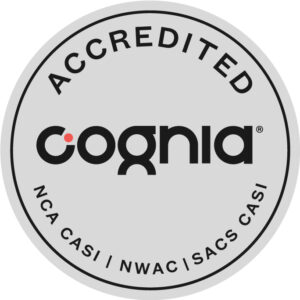When universities are reviewing applicants, they’re taking a risk in determining which students really want to be there. Aside from looking at GPA, SAT and ACT scores, Running Start sets you apart from other students. It shows you have a solid foundation of knowledge necessary to keep moving to higher levels in the university setting.
This program offers a broader range of experience in coursework and a higher-level course experience than specialized programs in most high school settings. A typical Running Start load is approximately three 5 credit courses each quarter (15 credits each quarter) and classes are for one hour each day.
When you test into Running Start, it shows that you are capable of college work. High schools set goals for graduates to meet by the time they finish 12th grade so they can be ready to work at a college level. However, by taking courses in a college setting, you will have higher academic skill level and more time to acclimate. AP courses also simulate a college workload, but if you take them at a college directly, you’re not just simulating, you’re doing the real thing.
Here are some examples:
Digital Media Arts
Advanced Video Production
In addition, you can choose to take courses in either of those programs as electives, even if you don’t make it a focus. If another university doesn’t accept that exact credit title, you will come out of high school with a certificate and an AA degree in those areas. That looks good on a resume for future jobs and college applications.
Many basic level courses in larger universities are in lecture halls with over 100 students, and you may not get very much interaction with the instructor. These are called “weed out” classes, since many students choose to drop out when they’re unable to survive the new setting for learning. Foundation college-level courses in the Running Start Program prepare you to complete these basic college courses successfully. The classes are also much smaller, so you have the opportunity for direct interactions with instructors and tutors.
No matter what your next step is after Running Start, you won’t be left empty handed. In the unlikely event that none of your credits transfer, you will still have a high school diploma just like every other graduate.
If you’ve chosen a highly specialized program as your major, you will still not have lost any time or money. Most programs require English 101, English 201 (or equivalent) and college level math. If you only came away with those basic credits transferring, you will still be ahead of high school students who chose to stay in a traditional track, and still save money in not having to take those classes again in college.
Bellevue College offers a list of universities that subscribe to the Direct Transfer Agreement for students who complete two years in Running Start.
Course equivalency guides tell you what transfers directly from one college to another. If you determine the program that you want to go into in another college/university, you can look at the course requirements for that program, then find the pre-requisites in Running Start. Take those first.
Find the course requirements and prerequisites of your desired major in your end goal program, then find the equivalents in Running Start. Make sure they align with the requirements to graduate from high school and the Running Start requirements. This way, you can transfer most or all of your foundation or prerequisite courses.
This is an example of what equivalency guides look like for UW. Click here to see the interpretation.

